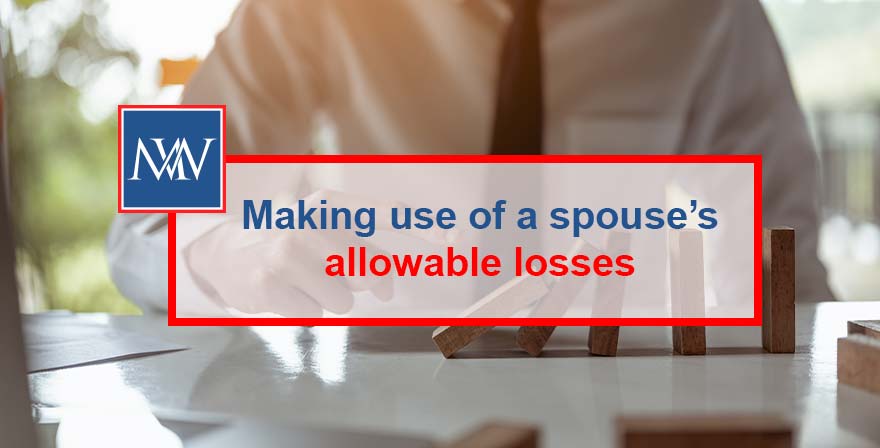
Making use of a spouse’s allowable losses
Spouses and civil partners benefit from special rules for capital gains tax purposes which allow them to transfer assets between them at a value that gives rise to neither a gain nor a loss. The transferee spouse/civil partner effectively takes on the transferor’s base cost. This can be very useful from a tax planning perspective to maximise available annual exempt amounts and capital losses.
Capital losses
Capital losses are automatically set against gains of the same tax year before taking account of the annual exempt amount. To the extent that they are not set against capital gains in this way, they are carried forward for relief against future gains.
While it is not possible to transfer capital losses to a spouse or civil partner to enable them to make use of those losses, it is possible to utilise the no gain/no loss rule to transfer an asset, or share of an asset, to a spouse or civil partner with losses prior to disposal, so that they can dispose of the asset (or a share in the asset) to a third party, making use of their unrelieved capital losses in the process.
This is illustrated by the following simple example.
Example
Dorothy and David have been married for a number of years.
In June 2020, Dorothy sold some shares, realising a capital loss of £40,000. She had no other disposals in 2020/21.
David is planning to sell a property, which is in sole name. He purchased the property for £200,000 and has received an offer for £285,000. Costs of sale are £4,250, meaning the sale will realise a net gain of £80,750 (£285,000 – £200,000 – 4,250). It is expected that the sale will complete in December 2021.
Both Dorothy and David are higher rate taxpayers.
Although Dorothy cannot transfer her losses to David, David can transfer a share in the property to Dorothy prior to sale.
David decides to transfer 76% of the property to Dorothy. Her base cost for her 76% share is £152,000.
On the subsequent sale, Dorothy will realise a gain of £61,370 and David will realise a gain of £19,380.
Dorothy can set her capital losses of £40,000 and her annual exempt amount of £12,300 against her share of the gain, leaving her with a chargeable gain of £9,070 (£61,370 – £40,000 – £12,300) on which tax of £2,539.60 is payable.
David can set his annual exempt amount of £12,300 against his share of the gain, leaving a chargeable gain of £7,080 on which tax of £1,928.40 is payable.
By making the transfer and accessing Dorothy’s allowable losses and annual exempt amount, the capital gains tax paid in total is £4,522, rather than the £19,166 ((£80,750 – £12,300) @ 28%) that would have been payable had David simply sold the property while in his sole ownership.
For more information, Book a Free Consultation
Need Accountancy Support?
For information on bespoke training, or if you have any other questions for Makesworth Accountant, please fill in your details below
















 151
151